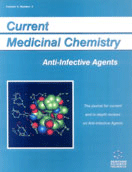Abstract
At least as long ago as the ancient Egyptians, sulfur-bearing natural products have been used for their potent medicinal properties. Although extracts from leeks were the earliest sulfur-containing substances to be employed for treatment of microbial and parasitic infections, a wide variety of natural and synthetically derived organosulfur compounds have been found to possess important antibiotic properties. There now exist, for virtually every class of human infection, representative examples of organosulfur anti-infective agents. By definition, these anti-infectives are compounds capable of preventing, inhibiting, or treating one or more types of infection. Except for their sometimes pungent odor and chemical instability, most antimicrobially active organosulfur compounds display few ill side effects. Given this era of drug resistance in which there is an ever-increasing demand for new antibiotics, organosulfur compounds may provide leads to novel therapies. In this review, we survey the microbiological properties and biochemical behavior of those organosulfur compounds whose activity depends specifically on the reaction of the organosulfur functionality with a biological target. The most common or likely mechanistic pathways by which these interactions occur are presented as a means to better understand the compounds modes of action, and to appreciate the opportunities that may exist towards designing yet even more effective anti-infective agents.
Keywords: sulfur, thiol, sulfide, antibiotic, antifungal, antiviral, antiparasitic, anti-infective
 4
4

